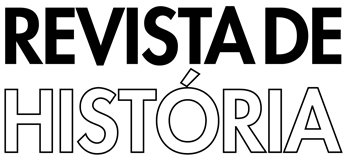Abstract
Fortaleza is currently an Atlantic submarine cable hub, but the memories of this infrastructure’s presence in the city’s collective imaginary are yet to be safeguarded. When a submarine cable first landed on the shores of the capital of Ceará state in the early 1880s, electro-abolitionist and phantasmagorical narratives surfaced. By examining the political and familial ties of the British individual William John Ayres, superintendent of the Brazilian Submarine Telegraph Co., this article is grounded in both infrastructure studies and network archaeology to contribute to the previous research of historian Eduardo Silva. Silva’s work connects Brazilian abolitionism with the social, cultural, and political impacts of submarine cable technology’s arrival. The primary contribution of this article is to demonstrate that the political appropriation surrounding this infrastructure, as observed by Eduardo Silva in the context of the 1888 abolition process in Rio de Janeiro, was previously tested in the Ceará abolition of 1884.
Keywords
abolition; submarine cable; infrastructure; telegraph; Ceará

 Thumbnail
Thumbnail
 Thumbnail
Thumbnail
 Thumbnail
Thumbnail
 Thumbnail
Thumbnail
 Thumbnail
Thumbnail
 Source: Arquivo Nacional. Fundo Ministério da Viação e Obras Públicas. BR_RJANRIO_4Y_0_MAP_0443
Source: Arquivo Nacional. Fundo Ministério da Viação e Obras Públicas. BR_RJANRIO_4Y_0_MAP_0443
 Source: Public domain
Source: Public domain
 Standing: Isaac Correia do Amaral, Papi Junior, cableman William John Ayres, Abel Garcia, João Cordeiro, Antonio Bezerra de Menezes, the great hero Francisco José do Nascimento (Dragão do Mar), Alfredo Salgado. Seated: Manoel de Oliveira Paiva, João Lopes Ferreira Filho, José Correia do Amaral, and Antonio Dias Martins. Source: Arquivo Nirez
Standing: Isaac Correia do Amaral, Papi Junior, cableman William John Ayres, Abel Garcia, João Cordeiro, Antonio Bezerra de Menezes, the great hero Francisco José do Nascimento (Dragão do Mar), Alfredo Salgado. Seated: Manoel de Oliveira Paiva, João Lopes Ferreira Filho, José Correia do Amaral, and Antonio Dias Martins. Source: Arquivo Nirez
 Source: Jornal Pequeno,
Source: Jornal Pequeno,  Source:
Source: